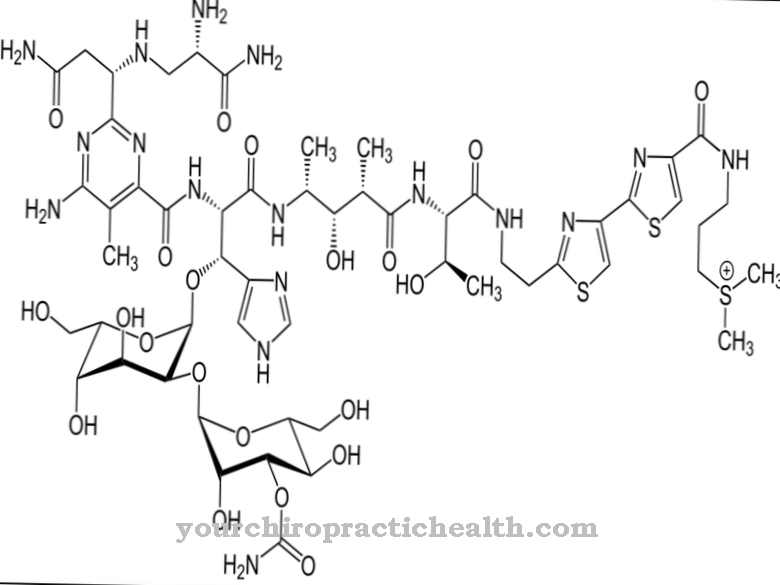The preparation was developed Acriflavinium chloride from I.G. Colors during the 1920s. Initially, the active ingredient was used to treat wound infections in the mouth and throat. Due to the way it works, however, it is to be feared that acriflavinium chloride could cause cancer. The active ingredient is therefore no longer used in human medicine, but in veterinary medicine for the treatment of ornamental fish.
What is acriflavinium chloride?

Acriflavinium chloride is an active ingredient that consists of a mixture of substances that the chemical company I.G. Farben has been applied for a patent. It is an antiseptic that was used to treat infections of the mouth and throat, as well as sleeping sickness.
Since a study by the International Agency for Research on Cancer has shown that acriflavinium chloride can possibly promote the development of cancer, the preparation is no longer used in human medicine.
However, acriflavinium chloride is widespread among aquarium owners who use the agent to disinfect aquariums as well as to treat various diseases in fish. Basically, acriflavinium chloride is classified as an antiseptic, whereby it is used as a disinfectant in the narrower sense.
Pharmacological effect
The spread of viruses and bacteria is prevented by acriflavinium chloride in that the active ingredient is stored in the pathogen's DNA between two base pairs. The next time cells divide, a so-called grid mutation occurs, which changes the genetic make-up of the pathogen.
Similar to antibiotics, different virus and bacterial strains can become resistant because the storage of the active ingredient triggers a mutation that can continue. Acriflavinium chloride is particularly effective against gram-positive bacteria.These bacterial strains change color on microscopic examination in a way defined by Hans Christian Gram, which makes it easier to diagnose the pathogen in various infectious diseases.
Gram-positive bacteria are mostly actinobacteria or firmicutes, which in nature play an important role in the breakdown of pollutants, but which often occur as pathogens. Because acriflavinium chloride not only attacks bacteria and viruses, but also unfolds its mechanism of action in human body cells, it can lead to mutations in individual cells here too. This is especially true with repeated use.
Medical application & use
The active ingredient acriflavinium chloride plays an important role in veterinary medicine in the treatment of ornamental fish. A variety of diseases such as bacterial infections, fungal infections, fin rot or minor inflammations are treated here.
Here the preparation is applied externally by simply adding it to the aquarium water. In addition to adult fish, fish spawn infected with an infection can also be treated with acriflavinium chloride. The preparation also promises effective help against various harmful parasites, including gill worms and skin worms. Acriflavinium chloride weakens infections that have already broken out and can prevent infections from breaking out. That is why the preparation is also used to disinfect aquariums.
Aquarium owners should ensure that they clean the filters before adding acriflavinium chloride to the water. Acriflavinium chloride also plays an important role as an effective preparation in pond management. Here it belongs to the standard remedy, which is given in quarantine ponds, even if the fish suffer from other diseases. Because these can promote the development of infections in weakened fish. By using acriflavinium chloride, the pond owner has the guarantee that at least part of the fish population can be saved.
Risks & side effects
One of the most common disadvantages of acriflavinium chloride is a yellowish discoloration of the water. In addition, aquatic plants can be damaged or killed. Because the active ingredient also penetrates the cells of the sick fish, the administration of acriflavinium chloride can lead to infertility in some fish species such as guppies.
For this reason, the preparation may no longer be used in human medicine in Germany because it is one of the trigger factors for various types of cancer. The mutagenic effect of acriflavinium chloride also means that numerous pathogens have now developed partial or complete resistance. In the long term, the preparation can become ineffective against complete bacterial and viral strains, as is already the case with antibiotics.







.jpg)



















